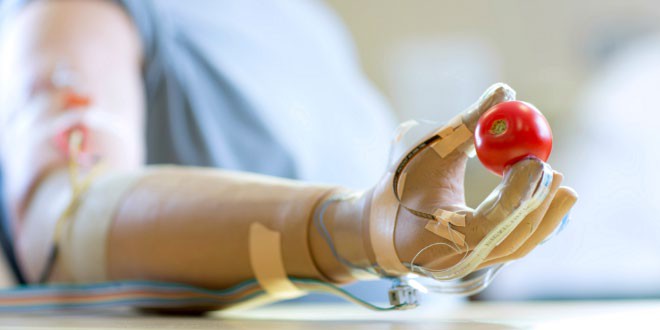For the many people around the world living with prosthetics, such a system could one day allow them to feel sensation in their artificial limbs, they reported in the US journal Science, according to media.
“This is the first time a flexible, skin-like material has been able to detect pressure and also transmit a signal to a component of the nervous system,” said Zhenan Bao, a professor of chemical engineering at the Stanford University, who led the 17-member research team responsible for the achievement.
The heart of the technique is a two-ply plastic construct: The top layer creates a sensing mechanism and the bottom layer acts as the circuit to transport electrical signals and translate them into biochemical stimuli compatible with nerve cells.
For the top layer, Bao’s team combined plastics and rubbers with billions of carbon nanotubes to create the plastic sensor to mimic human skin, which transmits pressure information as short pulses of electricity, similar to Morse code, to the brain.
The team then hooked this pressure-sensing mechanism to the second ply of their artificial skin, a flexible electronic circuit that could carry pulses of electricity to nerve cells.
One challenge is that the team had to prove the electronic signal could be recognised by a biological neuron.
Thanks to a technique called optogenetics, the team engineered a line of mouse brain cells to simulate a portion of the human nervous system.
In the experiment, they translated the electronic pressure signals from the artificial skin into light pulses, which activated the brain cells, proving that the artificial skin could generate a sensory output compatible with nerve cells.
Optogenetics was only used as an experimental proof of concept, Bao said, and other methods of stimulating nerves are likely to be used in real prosthetic devices.
There are six types of biological sensing mechanisms in the human hand, including touch, temperature and pain, but the new work only allowed the plastic “skin” to detect how hard it is being pressed.
Ultimately, Bao wants to develop different sensors to replicate, for instance, the ability to distinguish corduroy versus silk, or a cold glass of water from a hot cup of coffee.
“We have a lot of work to take this from experimental to practical applications,” Bao said. “But after spending many years in this work, I now see a clear path where we can take our artificial skin.”
 Kids Portal For Parents India Kids Network
Kids Portal For Parents India Kids Network







